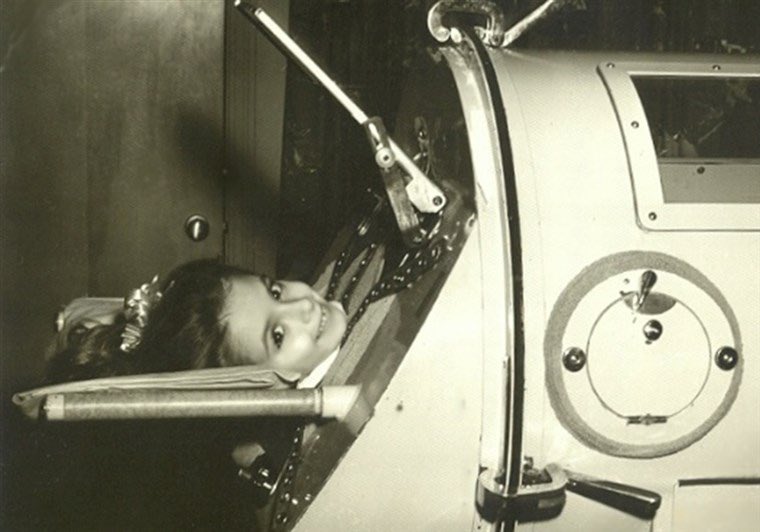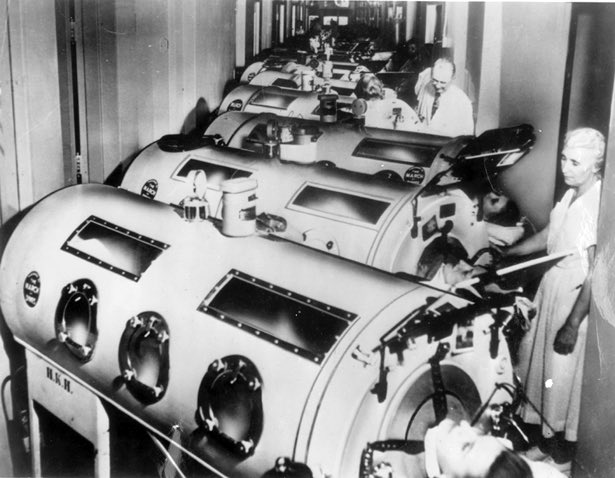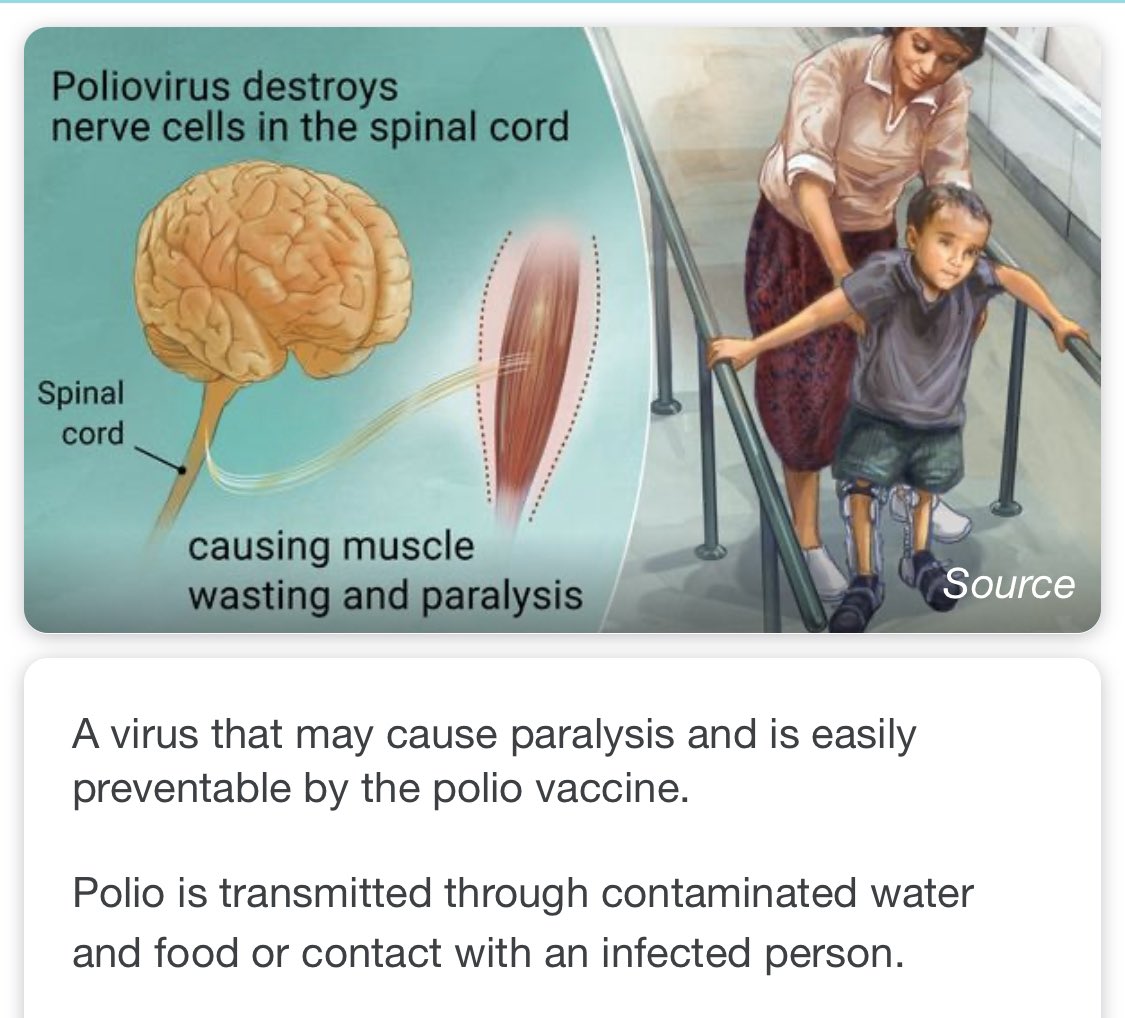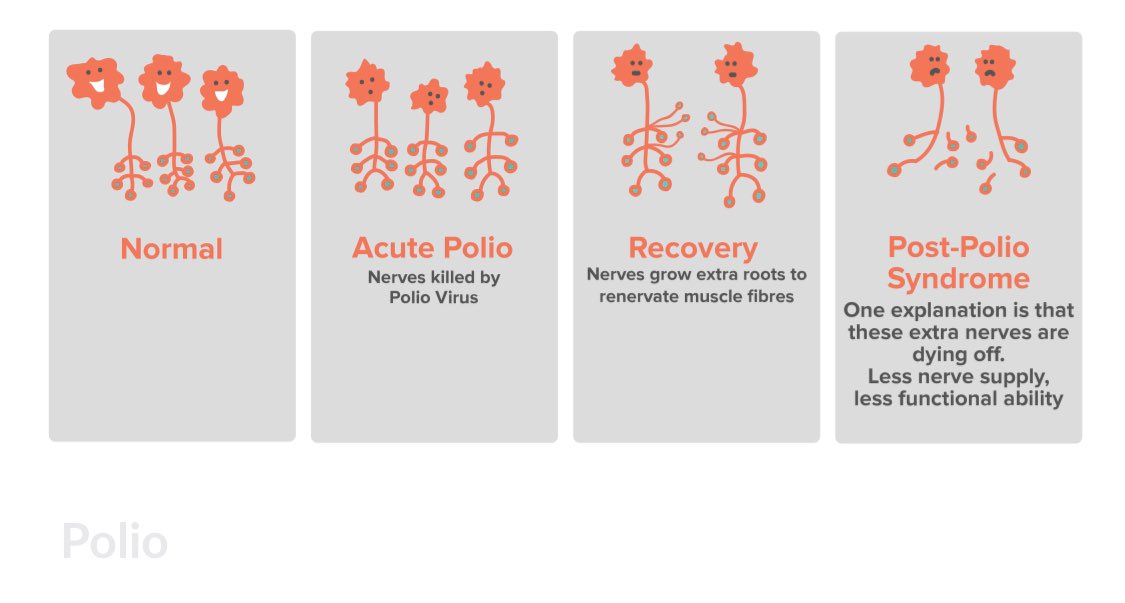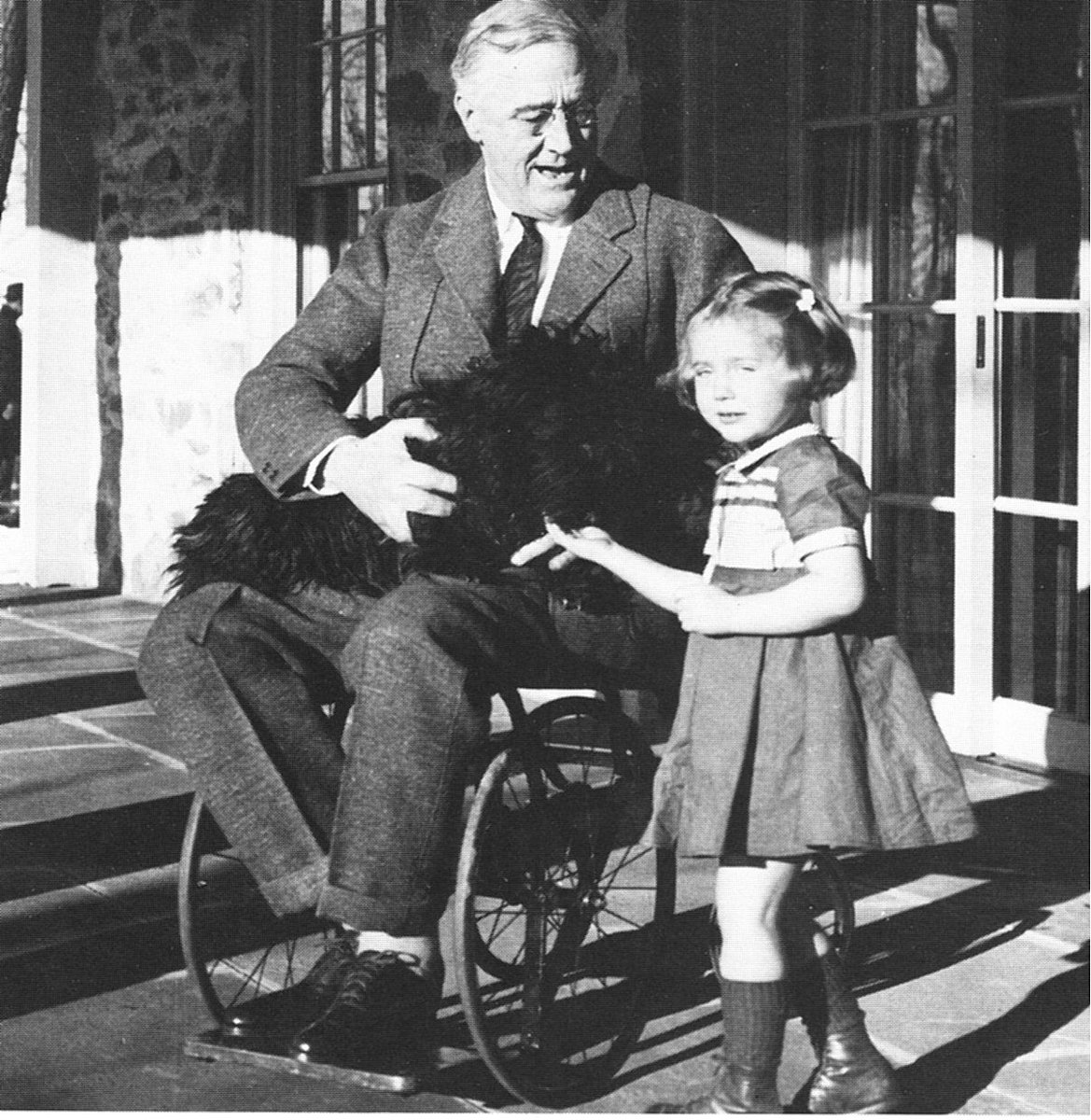Why is #asymptomatic spread important? Well today I was thinking about #polio virus. It was very #contagious, but 95% of people had no symptoms but were still infectious. About 4-5% of people had minor illness: fever, headache, nausea, vomiting, weakness. #SARSCoV2 #COVIDー19 https://twitter.com/ErinSandersNP/status/1250081382241579008
2/ About 1-2% of people had severe muscle pain, and stiffness in the neck and back. <1% of cases resulted in #paralysis including the legs and the nerves controlling breathing and swallowing necessitating use of the iron lung #ventilators. #Polio could attack the #CNS.
3/ At its peak in 1952, more than 21,000 #Americans contracted a paralyzing form of #polio, and 3,000 died from it. Once infected, there was no treatment besides time and tending to the symptoms. Interestingly, polio mostly attacked young children under age 5.
4/ In most cases, muscle function returned to some degree, and many people who developed paralytic #polio recovered completely. That said, muscle weakness and paralysis lasting a year or more could become permanent.
Although the number of cases of #polio has decreased hugely over the last 25 years, there are still around 400 cases of polio reported worldwide every year, and 1 in 200 cases ends in permanent #paralysis https://www.khanacademy.org/science/health-and-medicine/infectious-diseases/polio/a/what-is-polio
6/ People infected with #polio could also go on to develop “post-polio syndrome” or polio-related symptoms with onset occurring anytime from around 10 years to more than 60 years after initial infection, related to the damage the poliovirus did to the #neurons.
7/ We have to consider that the hypoxia and cessation of spontaneous breathing centers in the brain, as well as reported symptoms of Guillain-Barré, loss of smell + taste, headaches, and confusion seen in #COVIDー19 could be directly related to neuroinvasion by #SARSCoV2 @NEJM
8/ We need to look ahead for treatments and solutions. But we also need to look at history for lessons we may have missed. @tmprowell @marklewismd @jeremyfaust @ASlavitt
*HCV about 80% of those exposed to the virus develop a chronic infection, having presence of detectable viral replication for at least 6 months. Most people experience minimal or no symptoms during the initial few decades of the infection
*With HCV only 5–50% of those infected in the #USA and Canada are aware of their status. Routine screening for people between the ages of 18-79 was recommended by the United States Preventive Services Task Force in 2020.
*EBV infects B cells of the immune system and epithelial cells. Once EBV's initial lytic infection is brought under control, EBV latency persists in the individual's B cells for the rest of their life.

 Read on Twitter
Read on Twitter